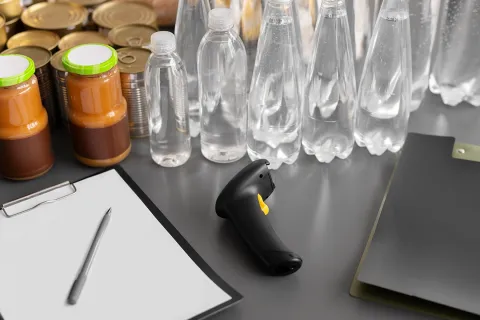The European Union (EU) has been at the forefront of addressing the environmental impact of pharmaceuticals, recognizing the significant risks associated with the release of these substances into the environment. In recent years, the EU has implemented several Regulatory updates and requirements to ensure that pharmaceutical companies assess and mitigate the environmental risks posed by their products.
Regulatory Framework
The EU’s Regulatory framework for Environmental Risk Assessments (ERAs) for pharmaceuticals is primarily governed by the European Medicines Agency (EMA) Guidelines and the European Commission (EC). The EMA Guidelines Committee for Medicinal Products for Human Use (CHMP) puts forward guidelines for conducting ERAs, which are mandatory for all Marketing Authorization Holders (MAHs) introducing medical products for human use into the EU market. The EC has issued a new ERA guideline titled “Guideline on the Environmental Risk Assessment of Medicinal Products for Human Use” (effective from September 01, 2024), which is aimed at simplifying and adapting the Regulatory framework to scientific and technological changes while reducing the environmental impact of medicinal products. According to this guideline, the ERA should be based on the use of the product and the physico-chemical, ecotoxicological, and fate properties of its active substance(s). This guideline provides additional details on conducting the ERA and assessing possible environmental risks associated with using the medicinal product. Its ultimate goal is to safeguard aquatic and terrestrial ecosystems, encompassing surface water, groundwater, soil, species vulnerable to secondary exposure, and potential impacts on microbial processes in Sewage Treatment Plants (STPs).
Key Requirements
Some of the key requirements for ERAs in the EU include:
- Mandatory ERA: All pharmaceutical companies must conduct an ERA as part of their Marketing Authorization Application (MAA) for medicinal products used for human use.
- Tiered Approach: The EU employs a tiered approach for ERAs for pharmaceuticals, divided into two (02) phases. Phase I involves a preliminary assessment, in which a decision tree needs to be followed to determine if the products would require a Phase II assessment. Phase II (Tier A and Tier B) offers a more detailed ERA, providing a comprehensive risk evaluation and the implementation of mitigation measures.
- Risk Mitigation Measures: Pharmaceutical companies must implement risk mitigation measures to minimize the quantity of active pharmaceutical ingredient (API) discharged to reduce the environmental impact of their products.
- Transparency: Pharmaceutical companies must provide transparent information on their ERAs and risk mitigation measures.
Environmental Risks from Pharmaceuticals
The EU is actively working to identify and manage the environmental risks posed by various pharmaceuticals through the EU Pharmaceuticals Regulations and various other industry initiatives.
| Antimicrobial Pharmaceuticals | Endocrine Disruptors | Persistent and Bio Accumulative Substances | Hazardous Chemicals |
| Antimicrobials may affect microbial processes in the STP, which is essential for good water quality measurement. The EU is working toward reducing the environmental impact of these drugs. | Some pharmaceuticals can interfere with natural hormones, potentially causing reproductive and developmental issues, which are drivers of alterations in population growth. | Active Pharmaceutical Ingredients (APIs) can persist in the environment and accumulate in organisms, potentially causing long-term effects. Companies aim to manage these environmental risks. | Certain pharmaceuticals fall into chemical hazard classes that pose risks to both human health and the environment. The EU requires ERAs for these substances. |
Industrial Challenges
Pharmaceutical companies in the EU encounter several hurdles when conducting ERAs for their products. Some of the key challenges ERAs for pharmaceuticals with respect to ERAs are:
- Data Availability and Quality: Pharmaceutical companies often struggle to gather and maintain accurate and comprehensive data on the environmental fate and hazard profiles of their products.
- Complexity of the Regulatory Framework: The EU’s Regulatory framework for ERAs is complex, involving multiple agencies and guidelines.
- Risk Assessment and Prioritization: Pharmaceutical companies must assess and prioritize the environmental risks associated with their products.
- Stakeholder Engagement and Communication: Pharmaceutical companies must engage with various stakeholders, including Regulatory agencies, environmental organizations, and the general public, to ensure that their ERAs are transparent and effective.
- Cost and Resource Allocation: Conducting ERAs can be a costly and resource-intensive process.
- Integration with Existing Processes: Pharmaceutical companies must integrate ERAs into their existing processes, such as Good Manufacturing Practices (GMPs) and quality control.
- Regulatory Harmonization: Pharmaceutical companies must comply with EU Pharmaceuticals Regulations across different EU member states, which can be challenging due to variations in Regulatory frameworks and enforcement.
To sum up, the EU has introduced new ERA guidelines requiring pharmaceutical companies to assess and mitigate the environmental risks of their products. This includes a tiered approach, mandatory ERA, risk mitigation measures, and transparency. Freyr offers expert guidance to help companies stay compliant, providing services such as scientific literature review, data gap analyses, data waivers, and robust study summaries for physicochemical, environmental fate, and ecotoxicological studies. Freyr also provides assistance in compiling ERA reports, performing PBT/vPvB assessments, and offers tailored testing strategies for antibiotics, antiparasitics, and endocrine active substances. Contact Freyr today to ensure compliance!










